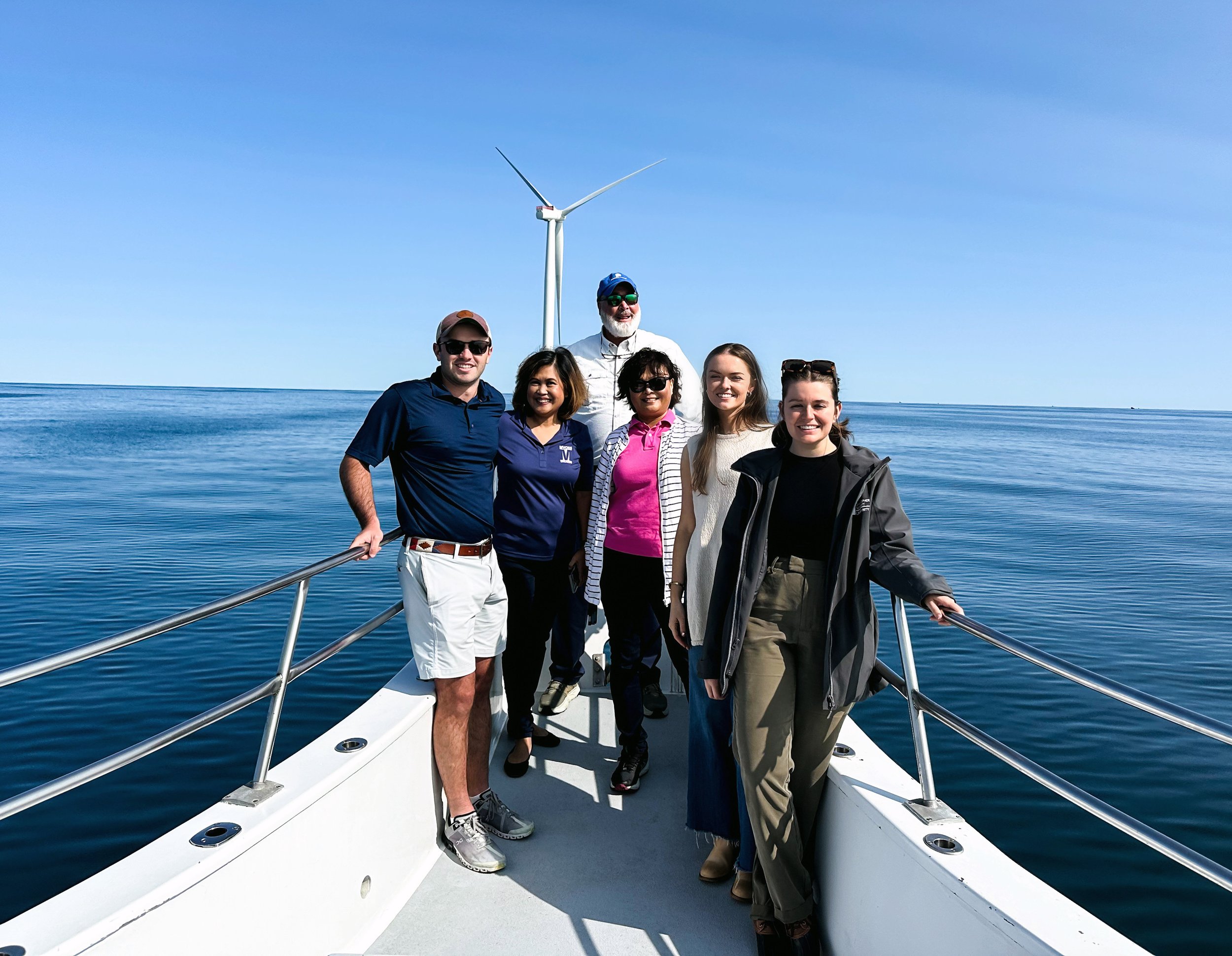A Glimpse of the Future: Touring the Coastal Virginia Offshore Wind Farm
By Steph Grasmick, North Carolina Program Associate at the Southeastern Wind Coalition
Under sunny skies, I set sail for what would be a two-hour journey to Dominion Energy’s Coastal Virginia Offshore Wind (CVOW) farm. I was joined by legislators, educators, and nonprofit staff, all eager to witness the landmark project that lay ahead. I carefully made my way to the bow, watching my step as we traversed the choppy waters. My gaze was fixed on the horizon, knowing that 27 miles in the distance, two turbines taller than the Washington Monument loomed. These turbines are a pilot project developed by Dominion Energy in 2020, and are the first in Federal waters. This pilot paved the way for the larger CVOW project, which is currently being constructed and already making waves in both the energy sector and the local economy.
“Once complete, CVOW will generate enough energy to power 660,000 Virginia homes annually with clean, reliable energy. I had a hard time grasping how such a feat could be possible, but I know it is the result of the thousands of workers that have a hand in the project.”
Onboard, I had the opportunity to learn about the project from John Larson, the Director of Public Policy and Economic Development at Dominion Energy. Once complete, CVOW will generate enough energy to power 660,000 Virginia homes annually with clean, reliable energy. I had a hard time grasping how such a feat could be possible, but I know it is the result of the thousands of workers that have a hand in the project.
Following the presentation, myself and others began to shake out our legs and make our way back out to the bow. I could hear someone in front of me say “Look, there they are!” Through squinted eyes, the silhouette of two turbines emerged, standing tall as testaments to innovation and progress in clean energy. On this particular day, the blades were still. The wind speeds were too low for the turbines to operate efficiently, which is atypical of Virginia’s windy coastline.
“I took note of a fishing boat next to the turbine. I watched as three fishermen hoped to get lucky with a big catch. Fishing is particularly attractive around wind farms due to the artificial reefs that form around the base of the turbines, attracting both recreational and commercial fishing.”
My gaze then shifted to a vessel in the distance. I learned that it was The Orion, a 710-foot vessel responsible for installing the 176 monopiles and monopile foundations for the CVOW commercial project. Larson provided the attendees a construction update, reaffirming that the project is both on time and on budget, and that more than 70 monopiles have been installed. It was fascinating to get a first-hand view of the progression of a wind farm along the visible horizon. After some time out on the water, we turned back to shore. I watched as the turbines faded into the distance.
My trip to CVOW represented much more than just a tour; it was a glimpse into a sustainable future where reliable, affordable, and increasingly clean energy powers our everyday lives
As construction continues, the promise of CVOW unfolds—a promise of innovation, economic opportunity, and a greener tomorrow. If you ever get the chance to witness the project up-close, don’t miss it (that is, as long as you don’t get seasick). It is a journey worth taking, not just for the views, but for the vision it represents.
Want to learn more about how CVOW will contribute to the Commonwealth? Check out our fact sheet
—
The Southeastern Wind Coalition is a 501(c)(3) nonprofit advancing the wind industry in the Southeast, with a focus on supply chain growth, economic development, job creation, and developing wind energy solutions that benefit both industry and communities. Discover more about SEWC’s mission and explore the story of wind energy in the Southeast at www.sewind.org.


